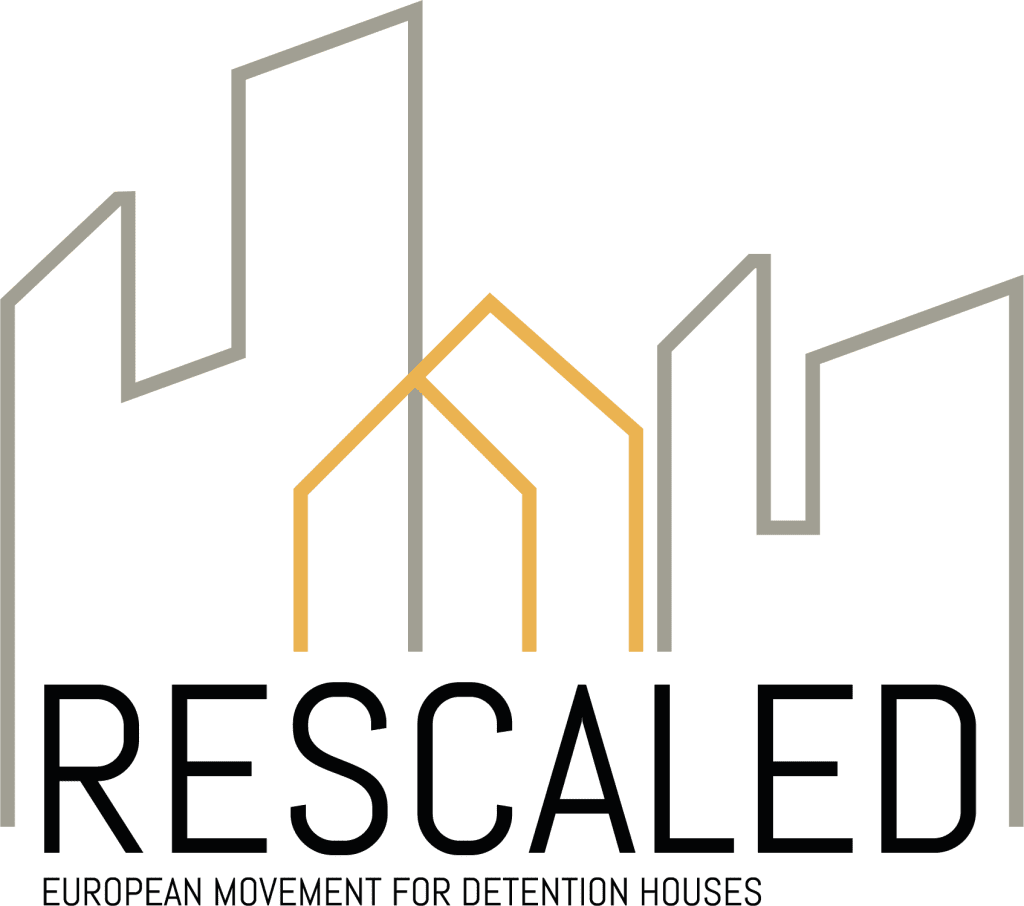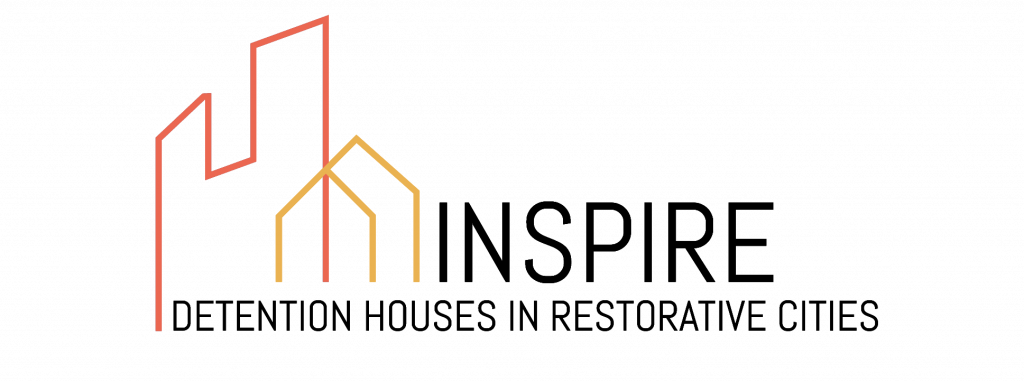Thandiwé Devriendt, the student social media manager at RESCALED, is a criminologist currently pursuing her master’s degree with a keen interest in forensic psychology and minority groups in vulnerable situations. From her studies in Criminology, work, and personal experience, she has chosen to write a blog post on the often underexposed topic of LGBTQ+ individuals in the criminal justice system. In her upcoming post, Thandiwé explores why detention houses, compared to traditional prisons, could offer a more humane and dignified detention experience for LGBTQ+ individuals.
The landscape of the criminal justice system for LGBTQ+ individuals is fraught with unique challenges and systemic inequalities that are often overlooked. Detention houses could be a way to address some of these issues, through their three principles: small-scale, differentiation and community-integration.
Status quo of the LGTBQ+[1] community in the criminal justice system
But what do the current numbers say?
When examining the current numbers and information provided the minority group seems to face several challenges. Firstly, LGBTQ+ individuals are more likely to be incarcerated. LGBTQ+ youth and transgender people, in particular, are disproportionately more likely to enter the criminal justice system due to a history of bias, abuse and profiling (National Center for Transgender Equality, 2014).
Secondly, they are more likely to face abuse when residing in prisons. They are often victims of daily humiliation, physical and sexual abuse. Additionally, they are faced with the inability to speak about these experiences due to fearing it will get worse if you complain. The fear often prevents them from complaining. For instance the European Comittee for the Prevention of Torture and Inhuman or Degrading Treatment or Punishment (CPT) has met several transgender women held in male sections of prisons who reported a feeling of unsafety, verbal abuse by staff and in some cases sexual abuse and assault by fellow incarcerated people. Furthermore, many LGBTQ+ individuals are placed in solitary confinement for extended periods solely due to their identity. For example, a report published in 2020 showed that trans women in Honduras prisons tend to be more severely punished, often through extended periods of solitary confinement. These phenomena are often worsened by the poor conditions in the prison systems: overcrowding, physical and sexual violence & heavy reliance on solitary confinement are common (Penal Reform International 2021; CPT, 2024; National Center for Transgender Equality, 2014).
Thirdly, both staff and other incarcerated people contribute to the abuse and mistreatment of LGBTQ+ individuals (National Center for Transgender Equality, 2014; CPT, 2024).
Fourth, the CPT observed that transgender individuals in prisons potentially face higher risks of self-harm, suicide, and violence-related psychological trauma, paralleling the high risks observed outside prison settings. Research suggests that factors such as discrimination, family rejection, and internalized or externalized transphobia contribute to these risks. The LGTBQ+ youth in specific have often faced such challenges, more specific family rejection, homelessness and hostility by the safety net (f.ex. foster care). This not only heightens the risks of above mentioned phenomena but also paves a way to possible criminal behavior (CPT, 2024; National Center for Transgender Equality, 2014).
Lastly, transgender and gender nonconforming people can face additional forms of mistreatment. Although practices are changing, several facilities still reside strictly according to their genital anatomy, regardless of their gender identity. Consequently their vulnerability to abuse increases when accommodated with a different gender from which they identify with (National Center for Transgender Equality, 2014; CPT, 2024).
Creating an inclusive environment according to the three principles
Where there are challenges, there’s room for opportunities, in which detention houses are one of them. Detention houses could offer several possibilities for the LGBTQ+ community who are currently incarcerated in large prison institutions. By focusing on the three key principles of detention houses —small-scale, differentiation, and community-integration — we can create a more supportive and restorative experience for LGBTQ+ individuals in the criminal justice system.
In small-scale detention houses, residents are given the opportunity to become more familiar with their environment and staff, fostering a sense of community and security. With fewer residents, the pressure on the staff is relieved. Consequently, the staff can obtain more personal contacts and insights into the group interaction, thus ensuring that any abuse or mistreatment by fellow residents or staff is promptly addressed and that any signs of suicidal thoughts or self-harm are early on noticed and treated.
Furthermore, small-scale detention houses can arrange flexible housing arrangements tailored to the needs and identities of LGBTQ+ individuals according to the judicial possibilities. This differentiated approach allows personalized solutions that ensure the safety and dignity of LGBTQ+ residents without disadvantaging them. This setting may allow for LGBTQ+ individuals to be housed according to their self-reported identity rather than their genital anatomy, making it easier to respect their gender identity and reduce their vulnerability to abuse. This differentiated approach can be co-created by persons with lived experience (formerly/currently incarcerated & an LGTBQ+ member), by doing so one can create a truly succesful implementation and approach.
Community-integration can be particularly challenging for LGBTQ+ individuals, who may face double exclusion due to their sexual orientation or gender identity and their criminal past. Community-integrated detention houses focus on preparing residents for successful reintegration by introducing them to supportive environments and resources. By fostering connections with neighbors and community members through activities and interactions, detention houses can help change perceptions and promote acceptance of both LGBTQ+ individuals and those with a criminal past. This approach not only aids in the successful community-integration of LGBTQ+ individuals, but also contributes to a more inclusive society. By utilizing the ecosystem of a detention house, LGBTQ+ individuals can more easily access essential services such as medical treatments for transitioning and therapy, ensuring comprehensive support and care compared to what is typically available in prisons. This is made possible by actively collaborating with actors in this healthy ecosystem to enhance accessibility and inclusivity in healthcare and support services.
By embracing these three principles and exploring legal and regulatory avenues, detention facilities can provide a more humane and dignified experience for LGBTQ+ individuals in the criminal justice system. This approach ensures they receive the respect, support, and opportunities they deserve. This blog post also serves as a call to civil society, especially in Europe, to delve deeper into and address the unique experiences and challenges faced by this community.
[1] While some findings originally pertained to a narrower category like LGTB, for this blog post, we have opted to use a broader term, specifically LGBTQ+. Our intention is to promote inclusivity, as we believe that the broader LGBTQ+ community encounters similar challenges.
Sources:
- CPT. (2024). Transgender persons in prison. Council of Europe. Retrieved from: 1680af7216 (coe.int)
- National Center for Transgender Equality. (2014). Standing with LGBT prisoners: An advocate’s guide to ending abuse and combating imprisonment. Retrieved from https://transequality.org/issues/resources/standing-lgbt-prisoners-advocate%E2%80%99s-guide-ending-abuse-and-combating-imprisonment
- Penal Reform International. (2021). Global prison trends 2021: LGBTQ+ people in prison. Retrieved from https://www.penalreform.org/global-prison-trends-2021/lgbtq-people-in-prison/






